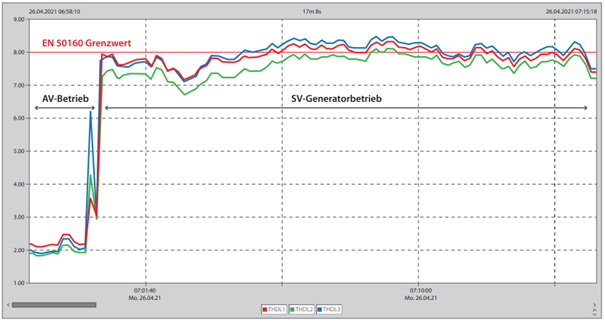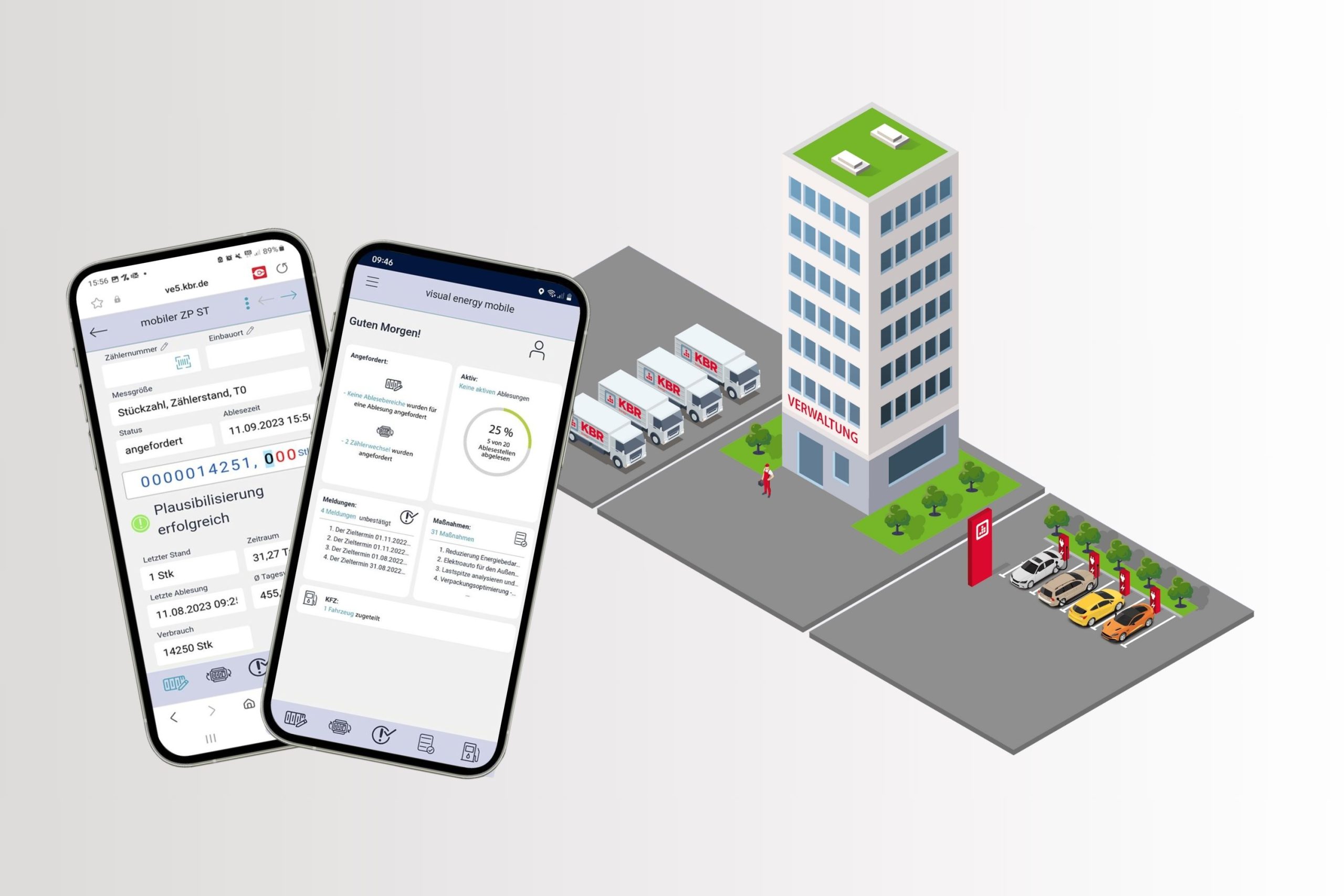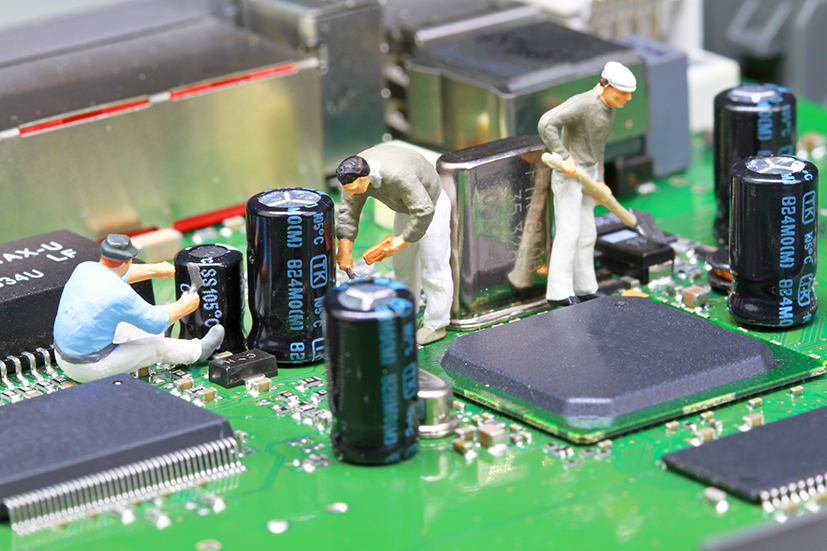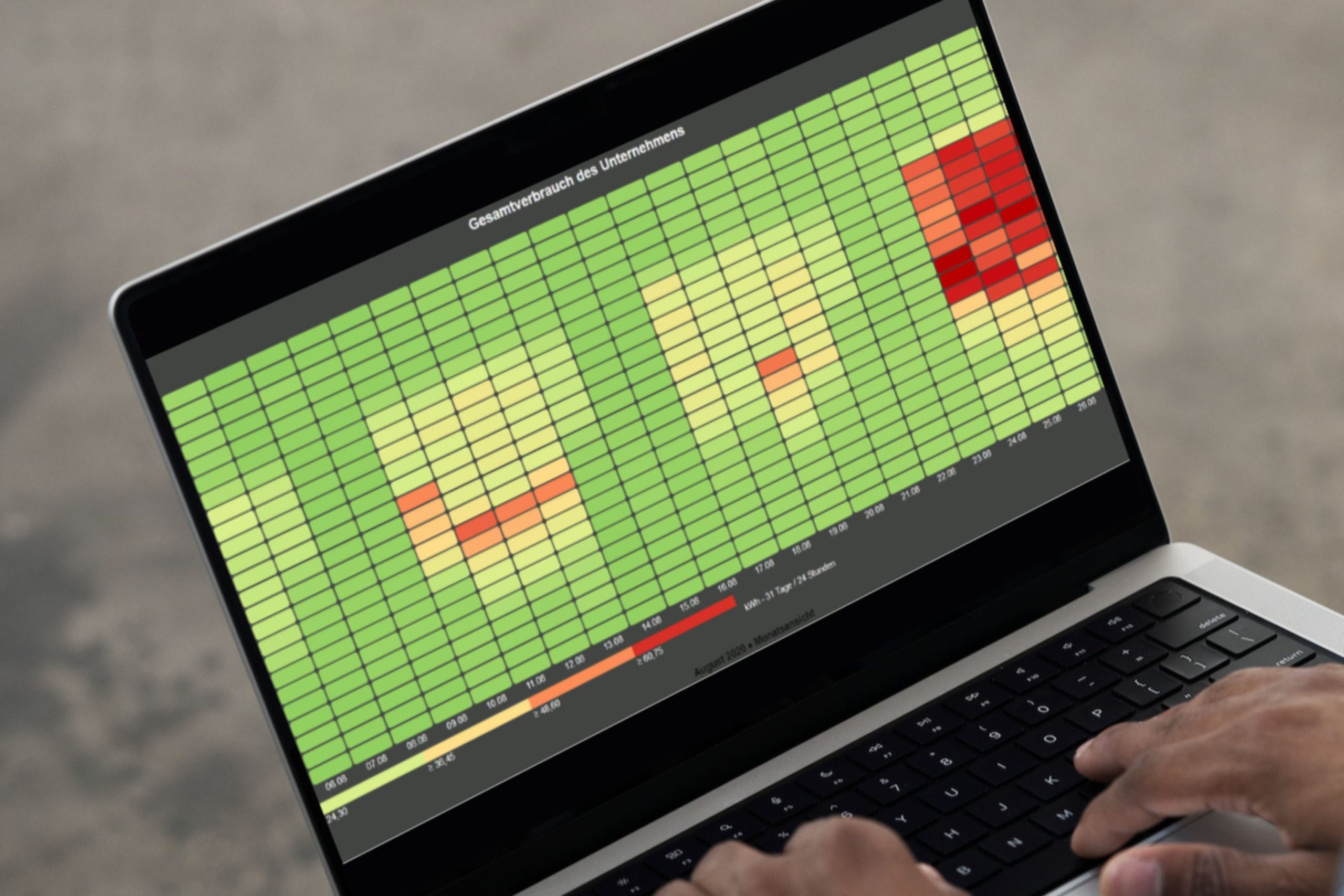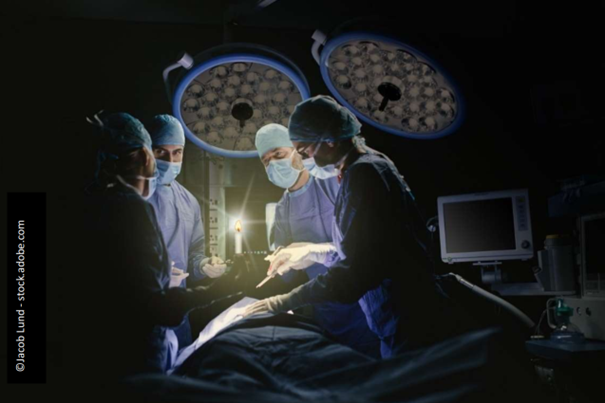Grid analyses provide security:
Companies of systemic importance, major production sites and, in particular, medical facilities have an emergency power supply This is designed to ensure a continuous power supply in the event of a power failure – ideally without interruptions.
The article is also available as a PDF for download.
But how reliable are these emergency power systems in an emergency? Will the engine start and generate electrical energy via the connected generator if the power from the grid operator fails? To check this, the emergency power systems are regularly commissioned manually. They are started, synchronized and operated in parallel with the power supply. In companies where a brief interruption (power failure until the emergency power system takes over) is unproblematic, this process proves to be perfectly adequate.
Black test in clinics
The operation of a hospital is unthinkable without electrical energy. Be it the lighting, the supply of life-sustaining machines or all other essential equipment – they all depend on a functioning power supply. To ensure a reliable electrical supply, special requirements are placed on the planning and, in particular, the operation of the power supply.
Two separate power supply networks are therefore set up: the general (AV) and the safety supply (SV). Both networks are connected to each other and are supplied with power by the energy supplier in normal operating conditions.
In the event of a power failure, the AV grid is disconnected along with the consumers connected to it that can be dispensed with. In the event of a fault, the SV grid, which supplies vital equipment, is supplied with power via the installed emergency power system – at least in theory.
In hospitals, a prolonged power failure would be extremely dangerous, if not life-threatening, for patients. For this reason, the emergency power systems must be tested regularly to ensure that they are functioning properly. This test should be carried out as a “black test”, which simply means switching off the power supply and waiting to see what happens. In the best case scenario, the emergency power supply unit will take over the safety supply without any faults.
Old grids new loads
The power grids in hospitals have generally been in operation for many years and have not changed significantly during this time. However, the connected loads have changed considerably over the years. In the past, so-called linear consumers with a pure 50 Hz current consumption dominated, whereas today they are increasingly being replaced by power-electronically controlled machines and systems. The main difference lies in the shape of the current consumption curve, which is no longer sinusoidal and leads to grid feedback in the voltage, in particular to so-called harmonics.
These harmonics can lead to machine and system failures. By connecting to the public power grid, these phenomena are largely compensated for. n an emergency, however, if the safety supply grid (SV grid) is operated in island mode without the support of the public grid, grid perturbations could increase. In such cases, there is a risk that the operation of the clinic can no longer be maintained.
At a workshop with technical clinic managers, several told us that they no longer have the confidence to carry out a black test. Others switch off sensitive consumers, such as the MRI, beforehand.
Grid analyses provide security
To minimize the risk of a blackout in the hospital, the power quality experts at KBR GmbH in Schwabach recommend having a grid analysis carried out during emergency power operation. Such measurements are carried out by some hospitals at regular intervals. The analyses repeatedly show that the harmonic voltages increase significantly during emergency power operation and occasionally exceed the permissible standard levels.
Measurement on an SV grid during a black test
Increasing operational safety through active harmonic filters and continuous measurement
The following measures are strongly recommended to increase operational safety: As a first step, a mobile measurement should be carried out during a black test in the safety supply network (SV network) to assess the current status. If increased or borderline harmonic levels are detected, the installation of an active power filter, such as the multiwave active, is recommended. This filter reduces the harmonic load and thus ensures trouble-free emergency power operation and smooth hospital operation.
In order to permanently monitor the grid conditions, permanently installed grid analysis measuring devices from KBR’s multimess-PQ series can be installed. These devices continuously measure the power quality and provide regular status reports. In this way, measures can be taken at an early stage if increased grid perturbations occur again. These measuring devices can be connected to the KBR PQ maintenance service so that the person responsible receives weekly reports on grid quality, prompt notifications of voltage dips and monthly, quarterly and annual heat maps of all relevant grid parameters.

Yours, Christian Wiedemann
Head of Product Management KBR GmbH
